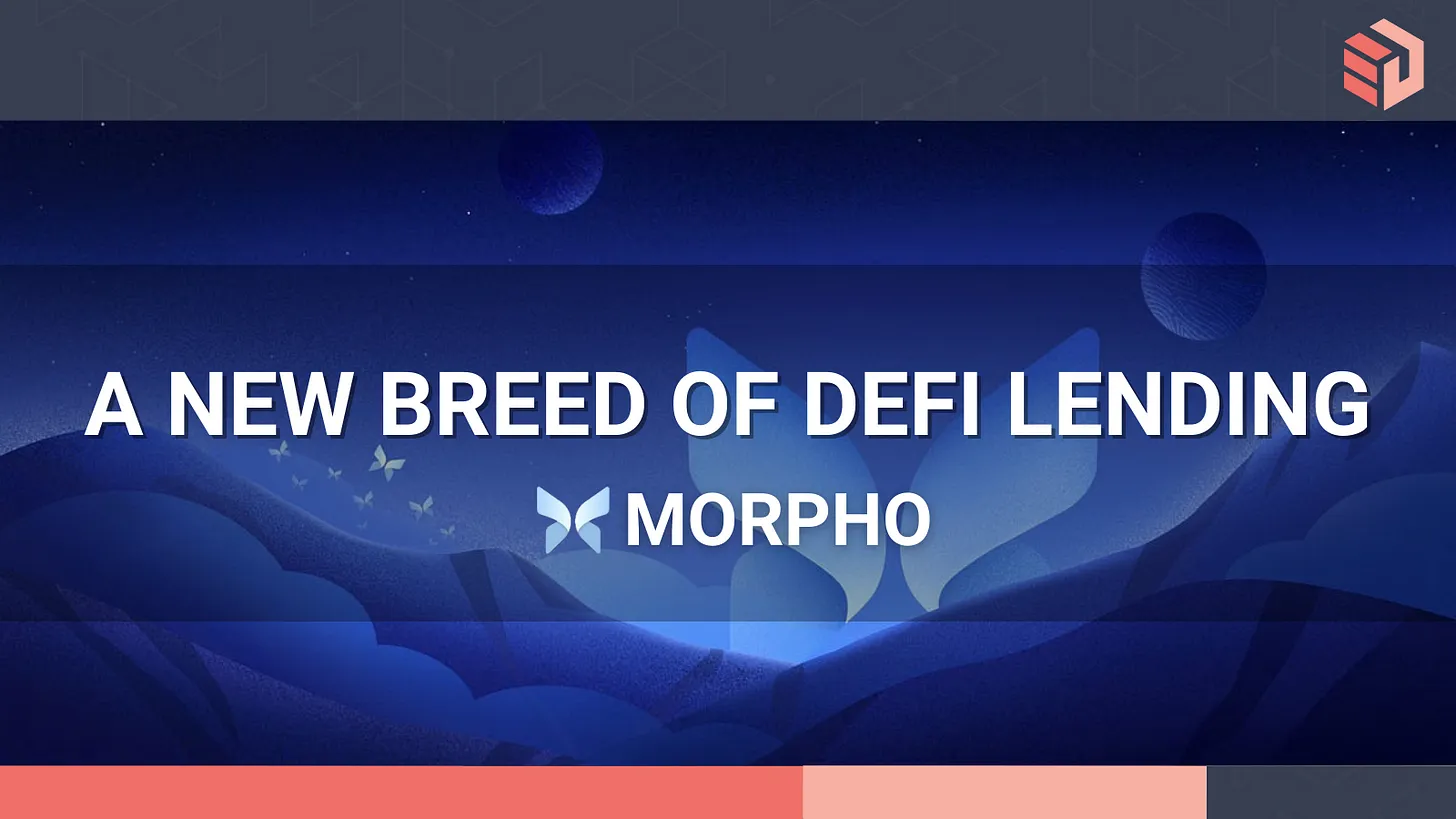
Introduction
Classic DeFi lending protocols operate as a liquidity pool that aggregates deposits and that liquidity further can be borrowed. Now that’s where the interest rate spread challenge comes in, as interest rate proceeds are shared across all depositors in a particular pool – the lower is the utilization of the deposit by borrowers (amount borrowed vs total deposits pool size) the lower is return on every deposited ETH for example. Meaning if a borrower pays on his/ her loan 5% depositors get 1% on their deposit.
That is where Morpho comes in, to optimize the interest rate for both sides making it almost equal at some mid point eg. 3%. Instead of pooling deposits, Morpho matches borrowers with depositors so interest payments of one are the proceeds for another.
The important design element is that Morpho integrates and sits on top of classic DeFi lending protocols (already started with Compound), to utilize their liquidity pool as a backup reserve. In order to do that Morpho fully mirrors all economic parameters of the lending protocol it sits on top of. To extend this reminds Commercial and Central Bank relations in TradeFi. Where Compound in this exercise serves as the liquidity pool of last resort.
In July 2022, Morpho has raised $18 million in Andreessen Horowitz and Variant led round. Here’s the link to Morpho-Compound and download the white paper.
Let’s dive in how this works
Using our known fellows Alice and Bob let’s play a small scenario and build a classic balance sheet for Morpho, denominated in ETH to see how things move.
1. Alice comes to Morpho and places a deposit of 1 ETH.

This is an easy one. There has been nothing at the start, then 1 ETH came in that is on one hand Asset that Morpho holds on the other is a liability in front of Alice to return it when she claims back.
2. Morpho places unutilized deposits in Compound.

As there are no loans yet, any unutilized liquidity Morpho places to Compound as a deposit to generate at least a minim possible yield for Alice. In return to the deposit Compound gives to Morpho a derivative token cETH that represents the ownership of the deposit.
3. Bob comes to borrow from Morpho 1 ETH at collateralization rate 20%.

Now that triggers number of transactions:
(a) Morpho takes its cETH back to Compound and gets back prior deposited 1 ETH.
(b) Morpho provides this 1ETH to Bob in exchange for a collateral value +20% to borrowed ETH. The interest rate would close to a midpoint between compounds borrow and lend rate. Therefore for Bob it is cheaper to borrow from Morpho than from Compound.
(c) As now Alice’s 1ETH has been granted to Bob (based on the matching) her interest rate goes up from minim to the one Bob pays. Therefore, it is more capital efficient for Alice to deploy liquidity to Morpho rather than to Compound.
4. Alice decides to withdraw her deposit

This one is really interesting, and has this element of Commercial-Central bank relation. Let’s go step by step:
(a) As Morpho does not have own liquidity to return to Alice, who wants to withdraw before Bob has repaid his loan, it goes and borrows necessary liquidity from Compound.
(b) For this Morpho uses Bob’s collateral, borrowing against it on Compound, to get 1ETH and return to Alice.
(c) As Compound borrowing interest rate is higher than what Bob pays, Morpho increases Bob’s rate to match to what Morpho now pays to the Compound.
This balance sheet looks as the miracle as there no deposits but there is a loan granted, meaning Morpho has ability to provide loans in excess of own liquidity. Reminds modern banking system where loans create deposits.
Final thoughts
Morpho is genuinely an innovative DeFi lending protocol that creates a lend-borrow order book to foster p2p lending and optimizing capital efficiency. Having said that there are certain areas that need to be further understood.

Got a question for our author regarding this article? Contact him at:
Oleksandr Ulytskyi | Senior Token Economist
E: [email protected] | W: EconomicsDesign.com
